| 11 December |
• yesterday • tomorrow |
| Optional Memorial of Saint Damasus I, Pope |
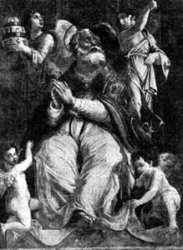
Raised in a pious family; his father was a priest in Rome, Italy and Damasus served for a time as deacon in his father's church, Saint Laurence. Priest. Assistant to Pope Liberius. Chosen 37th pope in a disputed election in which a minority chose the anti-pope Ursinus. The two reigned simultaneously in Rome which eventually led to violence between their supporters and false accusations of Damasus having committed a crime.
His pontificate suffered from the rise of Arianism, and from several schisms including break-away groups in Antioch, Constantinople, Sardinia, and Rome. However, it was during Damasus's reign that Christianity was declared the religion of the Roman state. He enforced the 370 edict of Emperor Valentinian controlling gifts to prelates, and opposed Arianism and Apollinarianism. He supported the 374 council of Rome which decreed the valid books of the Bible, and the Grand Council of Constantinople in 381 which condemned Arianism.
Economic patron of his secretary, Saint Jerome, commissioning him to make the translation of scripture now known as the Vulgate. Damasus restored catacombs, shrines, and the tombs of martyrs, and wrote poetry and metrical inscriptions about and dedicated to martyrs. They state that he would like to be buried in the catacombs with the early martyrs, but that the presence of one of his lowly status would profane such an august place. Ten of his letters, personal and pontifical, have survived.
• c.306 in Rome, Italy
• his family were Spanish in orgin
366
• 11 December 384 in Rome, Italy of natural causes
• buried in the Mark and Marcellianus catacombs in Rome
• bones re-buried in the church of San Lorenzo in Damaso
archeologists
He who walking on the sea could calm the bitter waves, who gives life to the dying seeds of the earth; he who was able to loose the mortal chains of death, and after three days' darkness could bring again to the upper world the brother for his sister Martha: he, I believe, will make Damasus rise again from the dust. - epitaph Damasus wrote for himself
The arrangement of the names of Christ, however, is manifold: Lord, because He is Spirit; Word, because He is God; Son, because He is the only-begotten son of the Father; Man, because He was born of the Virgin; Priest, because He offered Himself as a sacrifice; Shepherd, because He is a guardian; Worm, because He rose again; Mountain, because He is strong; Way, because there is a straight path through Him to life; Lamb, because He suffered; Corner-Stone, because instruction is His; Teacher, because He demonstrates how to live; Sun, because He is the illuminator; Truth, because He is from the Father; Life, because He is the creator; Bread because He is flesh; Samaritan, because He is the merciful protector; Christ, because He is anointed; Jesus, because He is a mediator; Vine, because we are redeemed by His blood; Lion, because he is king; Rock, because He is firm; Flower, because He is the chosen one; Prophet, because He has revealed what is to come. - from the Decree of Damasus (attributed to Damasus); from The Faith of the Early Fathers, by William A Jurgens, copyright 1970, the Order of Saint Benedict, Collegeville, Minnesota
https://catholicsaints.info/pope-saint-damasus-i/
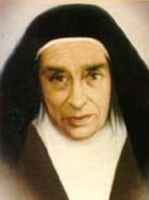
• Maravillas Pidal y Chico de Guzmán
• Maria de las Maravillas Jesus
Daughter of Luis Pidal y Mon and Cristina Chico de Guzman y Munoz, the Marquess and Marchioness of Pidal; her father was Spanish ambassador to the Vatican and a very active supporter of the Church. She was baptized at the age of eight days, Confirmed in 1896, made her first Communion in 1902, grew up in a pious family, was known as an intelligent and religious child, and early perceived a call to religious life. She entered the Carmelite novitiate at El Escorial, Madrid, Spain in 1920.
On 19 May 1924 Maria and three sisters founded a house at Cerro de los Angeles, Madrid, the geographical center of Spain, and she took her final vows there on 30 May 1924. Prioress of the house in 1926. The house expanded so quickly that Mother Marvillas was sent to found another in Kottayam, India, which over the years has expanded to many other Carmels in that country. She returned to Spain, and in 1936, as part of the anti-clerical actions of the Spanish Civil War, she and her sisters were arrested, relocated to Madrid, and subjected to fourteen months of house arrest and harassment. In September 1937 Mother Maravillas and her community relocated to las Batuecas, Salamanca, Spain where they founded a new house.
In 1939 she led a group of sisters to restore the house at Cerro de los Angeles. From there she led an expansion of the Carmelites with houses in Mancera de Abajo, Salamanca in 1944, Duruelo, Avíla in 1947, Cabrera, Salamanca 1950, Arenas de San Pedro, Avíla in 1954, San Calixto, Córdoba in 1956, Aravaca, Madrid in 1958, Talavera de la Reina, Toledo c.1960, la Aldeheula, Madrid in 1961, and Montemar-Torremolinos, Málaga in 1964. To unite these and other far-flung houses, she founded the Association of Saint Teresa in 1972. The Carmel in la Aldeheula was hugely expanded with schools, a community of houses for the local poor, church, community halls and other structures in what effectively became a small town.
In all these works Mother Maravillas was known for her dedication for work and prayer, her humility and care of her younger sisters, and her dedication to the Rules and spirituality of the Discalced Carmelites.
4 November 1891 in Madrid, Spain
11 December 1974 in La Aldehuela monastery, Madrid province, Spain of natural causes
4 May 2003 by Pope John Paul II
What happiness to die a Carmelite! - Saint Maria's dying words
Lord Jesus Christ, Thou doth ask us to put on the meekness and humility of Thy Heart. I thank Thee for having glorified in the Church Thy humble servant, Blessed Maravillas of Jesus. In this way, Lord, Thou giveth her in Heaven the just reward for her fidelity on earth. May the example of her virtues stimulate the desire in many souls to walk along the veritable Way, the Truth and the Life which Thou alone art. Deign that Blessed Mother Maravillas be canonized and grant me through her intercession the favor I ask of Thee. Amen. (Our Father, Hail Mary and Glory Be.) - Prayer for the Canonization of Maria Maravillas
https://catholicsaints.info/saint-maria-maravillas-de-jesus/
Francis Bell
22 November as one of the Martyrs of England, Scotland, and Wales
Studied at Saint Omer and at the Royal College of Saint Alban, Valladolid, Spain. Ordained in Salamanca, Spain in 1618. Joined the Franciscans in 1618. Worked in Douai and Gravelines in France, and Brussels, Belgium. He returned to England to minister to covert Catholics in 1634. Arrested and condemned to death for the crime of being a priest. Martyr.
13 January 1590 in Temple Broughton, Worcestershire, England
hanged, drawn, and quartered on 11 December 1643 at Tyburn, London, England
22 November 1987 by Pope John Paul II
Dear countrymen, give ear to me, and as you desire to be delivered from your present miseries put an end to your sins; for without doubt your enormous crimes are the cause of the calamities under which you groan. But above all I exhort you to renounce heresy, in which you have been so long engaged; for this (with grief I speak it) has cut you off like putrid members from the body of Christ, and like dead branches from the tree of His Church. But if you resolve to persist in loving darkness more than light, long afflictions will attend you, and certainly many calamities and miseries threaten this city and the whole kingdom unless they desist from persecuting priests and Catholics. See and consider, I beseech you, the afflictions with which God has begun visibly to punish you, and be assured that all these punishments are tokens of His love, and a proof that He would not destroy you but as it were by constraint. I repeat, these chastisements, civil wars, and calamities are inflicted to bring you from shipwreck into the haven of the Catholic Church. Abuse, then, no longer His mercy, nor force him to destroy you by obstinacy in your evils. – Blessed Arthur, speaking from the scaffold to the spectators at his execution
https://catholicsaints.info/blessed-arthur-bell/

Daniel of Constantinople
Monk at Samosata on the Upper Euphrates River at the age of twelve. When chosen abbot by his brothers, he declined. He made two trips to learn from Saint Simeon Stylites the Elder, and received that saint's blessing. Would-be pilgrim to the Holy Lands, but a vision of Saint Simeon caused him to travel instead to Constantinople where he spent the rest of his life. At age 42, Daniel decided to become a pillar-dwelling hermit like Simeon, and spent the next thirty-three years on one.
Daniel lived on a series of pillars built for him by Emperor Leo I and other wealthy supporters, living in the open weather, standing each day until he collapsed. Ordained by Saint Gennadius. Many came to learn from the holy man, sitting at the foot of the pillar as he preached, celebrated Mass, gave spiritual counsel, and healed the sick who were taken up to his platform. Counsellor to Emperor Leo, Emperor Zeno, and the Patriarch of Constantinople; prophesied some of the political turmoil in which Zeno was involved. Daniel came down from his pillar only once - to convince Emperor Baliscus to abandon the Monophysite heresy.
409 at Maratha, Syria
• 493 near Constantinople of natural causes
• accurately predicted the date of his death, and near the end he had visions of angels
Thou becamest a pillar of patience and didst emulate the Forefathers, O righteous one: Job in his sufferings, Joseph in temptations, and the life of the bodiless while in the body, O Daniel, our righteous Father, intercede with Christ God that our souls be saved. - Greek Orthodox Apolytikion
https://catholicsaints.info/saint-daniel-the-stylite/
Mausona
14 November as one of the Holy Fathers of Mérida
Born to the Gothic nobility, Masona was educated at the monastery affiliated with the Basilica of Saint Eulalia in Mérida, Spain. He was known as an excellent and pious student, and when he was old enough, entered the monastery. Chosen bishop of Mérida c.572. He built a hospital, staffed it with doctors and nurses, supported the work and expansion of churches and monasteries in the region, and was noted for his almsgiving to help the poor. He participated in the 3rd Council of Toledo in 589, which led to the conversion of the Visigoths to Catholicism, the Synod of Toledo in 597, and he helped bring Saint Hermenegild to the faith. In the persecutions of Catholics by the Arian king Leovigildo, Masona was exiled for a time. Late in life he tried to put some of the administrative duties onto archdeacon Eleuterio, but Eleuterio was swayed those seeking power over the diocese, and Masona returned to full-time work until his death. Saint Gregory of Tours wrote about him, Saint Isidore of Seville wrote to him.
c.606 in Mérida, Spain of natural causes
https://catholicsaints.info/saint-masona-of-merida/
Studied in Paris, France. Benedictine Cistercian monk at Clairvaux Abbey in 1131; spiritual student of Saint Bernard of Clairvaux who accepted David after he had been initially rejected due to health problems. Assigned by Saint Bernard to found and lead the Himmerod Abbey, Trier, Germany in 1134. Miracle worker, healer, exorcist with the gift of prophecy.
c.1100 in Florence, Italy
• 11 December 1179 of natural causes
• buried in the chapter room of Himmerod Abbey
• relics transferred to a marble urn at the altar of the abbey church in 1204
• relics transferred to Trier, Germany in 1802 when the abbey was suppressed
• relics transferred back to the Himmerod Abbey in 1919 when the Cistercians returned to the house
• in 1699 the general chapter of the monks of Citeaux authorized a memorial at Himmerod Abbey
• in 1734 the canon of Florence, Italy published a Life of David and obtained approval from Pope Clement XII to expose the relics for veneration
https://catholicsaints.info/blessed-david-of-himmerod/
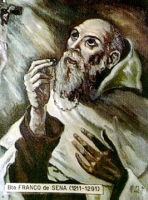
Francesco Lippi
Born to the Italian nobility. Spent a dissolute youth as a soldier in Italy. Near Sartiano, Italy he was blinded, and offered to change his life if he was healed; he was healed. Pilgrim to Rome, Bari and Loreto in Italy. Having heard the preaching of Blessed Ambrose Sansedoni in Siena, Italy, he was moved to retire from the world to live as a hermit and do penance for his earlier life. Joined the Carmelites, but continued to live as a hermit. Received visions of Jesus, Mary and the angels; had the gift of prophecy, and was beset by demons.
13th century Grottoes-Siena, Italy as Francesco Lippi
• 11 December 1291 in Siena, Italy of natural causes
• some relics enshrined in the Carmelite monastery in Cremona, Italy
1670 by Pope Clement X (cultus confirmation)
https://catholicsaints.info/blessed-franco-of-siena/
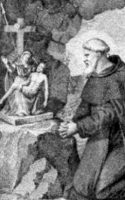
• Jerome Ranucci
• Angel of Good Counsel
Born to a noted middle class family; his father was later given rank in the noblity. Servite. Studied philosophy and theology in Bologna, Italy. Priest. Renowned for his learning and scholarship. Advisor to Duke Frederick of Montefeltro, Urbino, Italy.
c.1410 at Sant'Angelo, Vado, Pesaro-Urbino, Italy
c.1468 of natural causes
1 April 1775 by Pope Pius VI (cultus confirmed)
https://catholicsaints.info/blessed-jerome-ranuzzi/
• Severinus
• Mariophylus Severinus
• Mariae servus Singularis
Norbertine canon of the monastery in Roggenburg, Swabia, Bavaria (in modern Germany). He was known for his deep prayer life, his personal penances, and his devotion to the Virgin Mary. Promoted pilgrimages to a shrine in nearby Sheissen. In his later years he withdrew to life as a prayerful hermit in a cell in the monastery, spending his life in prayer, spiritual communion and celebrating Mass alone.
1627 in Germany
noon 11 December 1708 of natural causes
https://catholicsaints.info/blessed-severin-ott/
Norbertine canon of the Averbode monastery near Diest, Brabant (in modern Belgium). Ordained in 1574. Sub-prior of his house and master of novices, he was known for instilling a zeal for the faith in his charges by his pious personal example. Vicar of Hechtel, Limburg, Belgium in 1586 when he was imprisoned by Protestants at war with the Church.
1548 in Miskom, Kortenaken, Vlaams, Brabant, Flanders (in modern Belgium)
11 December 1613 of natural causes
https://catholicsaints.info/blessed-jean-laurens/
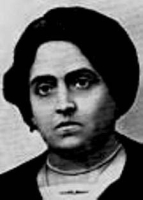
Lay woman in the archdiocese of Valencia, Spain. Member of Catholic Action. Martyred in the Spanish Civil War.
22 January 1891 in Valencia, Spain
11 December 1936 in Burjassot, Valencia, Spain
11 March 2001 by Pope John Paul II
https://catholicsaints.info/blessed-pilar-villalonga-villalba/

Bishop of Piacenza, Italy. Friend of Saint Ambrose of Milan, he regularly read and commented on the first draft of Ambrose's writings. Dispatched by Pope Saint Damasus I to Antioch to suppress the Meletian Schism. Attended the Council of Aquileia in 381.
420 of natural causes
https://catholicsaints.info/saint-sabinus-of-piacenza/
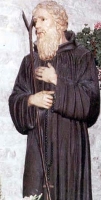
• Hugolino Magalotti
• Ugolino Magalotti
Friar Minor tertiary. Hermit.
at Camerino, Italy
11 December 1373 of natural causes
4 December 1856 by Pope Pius IX (cultus confirmed)
https://catholicsaints.info/blessed-hugolinus-magalotti/
Sixth century soldier. Hermit in Wales. Servant to Saint Peris.
Welsh
Renouncing thy warlike ways, O Father Cian, thou didst engage in thy fiercest fight with the powers of darkness. Pray, we beseech thee, that our spiritual struggles may be pleasing to Christ our God, that He will show us great mercy. - troparion of Saint Cian
https://catholicsaints.info/saint-cian/
Father Martín of Saint Nicholas
Augustinian Recollect priest. Martyr.
8 December 1598 in Zaragoza, Spain
burned alive on 11 December 1632 in Nagasaki, Japan
23 April 1989 by Pope John Paul II
https://catholicsaints.info/blessed-martin-lumbreras-peralta/
Father Melchor of Saint Augustine
Augustinian Recollect priest. Martyr.
1599 in Granada, Spain
burned alive on 11 December 1632 in Nagasaki, Japan
23 April 1989 by Pope John Paul II
https://catholicsaints.info/blessed-melchor-sanchez-perez/
Peris
A cairn on the top of the Llanberis Pass in Wales is known as Corffwysfa Pens (the Resting-Place of Saint Pens), and there are traditions of pilgrimage to the hill to pray for the intercession of Saint Pens. However, no information about him has survived.
Llanberis, Wales
https://catholicsaints.info/saint-pens/
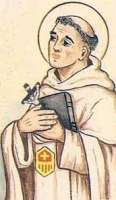
Commander of the Mercedarian convent of Santa Maria in Burgos, Spain. Noted for his personal piety and his support of the spiritual growth of the friars in his house.
https://catholicsaints.info/blessed-martino-de-melgar/
Aithelas
Pagan priest who was healed from a serious disease by the prayers of Christians; convert. Martyred in the persecutions of Shapur II.
c.354 in Arbela, Persia
https://catholicsaints.info/saint-aithalas-of-arbela/
• Eutychius of Spain
• Eutychius of Cadiz
• Eutuchius of Merida
• Oye
Martyr.
4th century Spain
https://catholicsaints.info/saint-eutychius-the-martyr/
Barsabbas
Abbot. Known as a miracle worker. Martyred with twelve of his monks in the persecutions of the Sassanid King Shapur II.
Persian
martyred in 342
https://catholicsaints.info/saint-barsabas/
Fivetein, Fidivitanus
Benedictine monk at Saint Saviour Abbey in Redon, Brittany (in modern France). Spiritual student of Saint Convoyon of Redon.
c.888 of natural causes
https://catholicsaints.info/saint-fidweten/
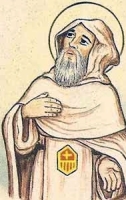
Mercedarian friar in the convent of Santa Caterina in Toledo, Spain.
https://catholicsaints.info/blessed-dominic-yanez/
Acepsius
Christian deacon. Martyred in the persecutions of Shapur II.
c.354 in Arbela, Persia
https://catholicsaints.info/saint-apseus-of-arbela/
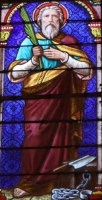
Two Christian missionaries and one of their local defenders who faith in the persecutions of governor Rictiovarus - Fuscian, Gentian and Victoricus.
beheaded in 287 in Saint Aux-Bois, Gaul (in modern France)
https://catholicsaints.info/martyrs-of-saint-aux-bois/
Three Christians murdered in the persecutions of Diocletian for giving aid to Christian prisoners - Pontian, Practextatus and Trason.
imperial Roman citizens
c.303 in Rome, Italy
https://catholicsaints.info/martyrs-of-rome-11-december/
• Ludolf van Craeywinckel
• Luke of Chalcedon
• Maria Piedal
• Pablo di Merida
• Tassilo III
• Wilbirg
CatholicSaints.Info Portable Edition